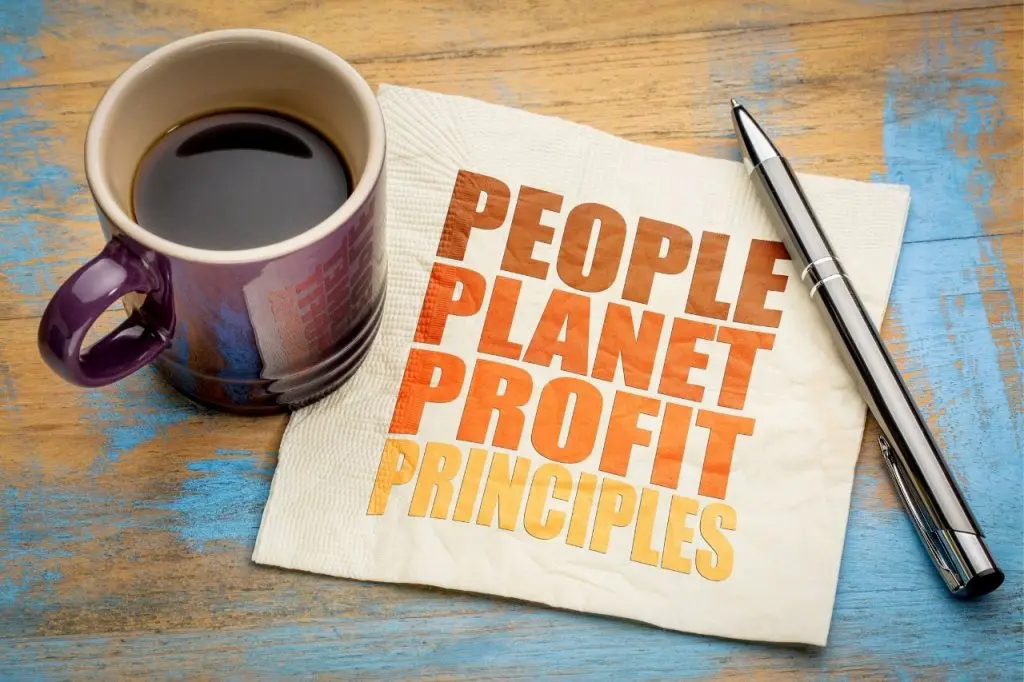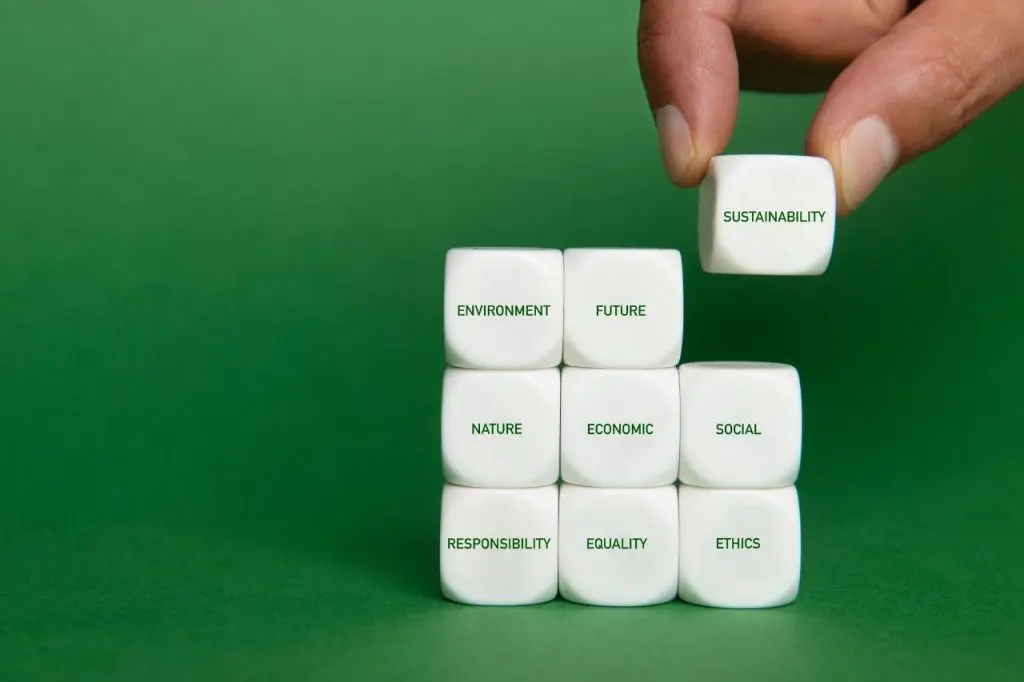There’s no question that sustainable business practices are essential, but knowing where to start can be tricky.
This beginner’s guide will outline the basics of sustainable business, including why it matters and how you can implement it into your own company.
By the end of this post, you’ll know exactly where to get started on making your business more environmentally friendly and socially responsible. Let’s get started.
Table of Contents
- What Is Sustainable Business Practice?
- What Are Five Examples of Sustainable Business Practices?
- Why Do We Need Sustainability in Business Practices?
- How Can a Business Have Both Sustainability and Profitability?
- Final Thoughts
What Is Sustainable Business Practice?

Sustainable business practices refer to the three pillars of sustainability – environmental, social, and economic. To be sustainable, a business must positively impact all three of these pillars.
Environmental sustainability is about reducing the business’s impact on the natural environment. This can include reducing emissions, waste, and water usage. It can also involve using sustainable materials and powering the business with renewable energy.
Social sustainability is about creating positive social impacts. This can include fair labor practices, community engagement, and diversity and inclusion.
Economic sustainability is about creating long-term value for shareholders. This includes things like generating revenue, controlling costs, and minimizing risk.
Sustainable businesses often have a competitive advantage because they can reduce their costs while attracting socially conscious consumers. In addition, sustainable businesses tend to be more resilient to economic downturns because they have a diversified customer base and a reputation for being environmentally friendly.
What Are Five Examples of Sustainable Business Practices?

As our economy grows, so does the demand for sustainable business practices.
Consumers are becoming more aware of the environmental and social impact of their purchasing decisions, and they are increasingly choosing to support businesses that align with their values.
Here are five examples of sustainable business practices that are becoming more common:
1. Offering recyclable or compostable packaging – Consumers are becoming more conscious of their waste and looking for businesses that offer eco-friendly packaging options.
2. Using natural or recycled materials – It includes using recycled content in products and sourcing materials from sustainable sources.
3. Implementing energy-efficient processes – Many businesses are looking for ways to reduce their energy consumption, whether it’s through solar power, LED lighting, or other measures.
4. Promoting fair trade practices – Fair trade ensures that workers in developing countries are paid a fair wage.
5. Supporting local communities – Local businesses often give back to their communities through volunteering, donations, or other initiatives.
These are just a few examples of sustainable business practices becoming more common. As consumer awareness grows, we can expect to see even more businesses embrace the practices.
Why Do We Need Sustainable Business Practices?

Businesses have a profound impact on the environment. They consume natural resources, produce wastes and pollutants, and generate greenhouse gas emissions.
As the world population grows and consumption levels rise, the need to minimize the negative impact of business operations on the environment has never been greater.
Sustainability is about meeting the needs of the present without compromising the ability of future generations to meet their own needs.
In other words, it’s about responsible stewardship of our planet’s resources. By adopting sustainable practices, businesses can reduce their environmental impact, save money, and create a healthier workplace for employees.
There are many reasons why sustainability is essential in business. For one thing, it’s simply the right thing to do. We are responsible for protecting our planet and its inhabitants, and companies play a key role in that effort.
In addition, sustainable practices can lead to significant cost savings. For example, businesses can reduce their energy consumption and lower their utility bills by improving energy efficiency.
And by investing in renewable energy sources, companies can hedge against rising energy costs and stabilize their operating expenses.
Finally, sustainable businesses often enjoy a competitive advantage by attracting and retaining customers looking for environmentally responsible companies.
Despite the many benefits of sustainability, some businesses are still reluctant to make the switch. They may be concerned about the cost or not be sure how to get started.
But there are many resources available to help businesses implement sustainable practices. And as more and more companies embrace sustainability, it will become more accessible and affordable for everyone.
Sustainability is important for businesses of all sizes. Whether you’re a small business owner or a corporate executive, you have a responsibility to operate in a way that protects our planet and its resources.
By adopting sustainable practices, you can save money, reduce your environmental impact, and create a healthier workplace for your employees. It’s time to make sustainability a priority in all aspects of your business.
How Can a Business Have Both Sustainability and Profitability?

Any business wants to be profitable, but there has been an increased focus on sustainability.
Consumers are becoming more aware of the environmental and social impact of the products they buy, and they are increasingly interested in supporting businesses that share their values.
As a result, sustainability has become an important factor in determining profitability. There are some ways that businesses can achieve both sustainability and profitability.
One is by reducing their reliance on fossil fuels. This can be done by investing in renewable energy sources, such as solar and wind power.
Alternatively, businesses can increase their efficiency by implementing green building practices or using recycled materials. Another way to achieve both sustainability and profitability is by reducing waste.
This can be done through recycling programs, composting initiatives, or simply by producing less waste in the first place. Going paperless transactions – embracing digital apps and services – can reduce paper waste and inks.
Finally, businesses can also achieve sustainability and profitability by investing in their employees. This includes offering training and development opportunities, providing fair wages and benefits, and creating a culture of respect and inclusion.
Businesses can show that profitability and sustainability are not mutually exclusive goals by taking these steps.
Final Thoughts
Sustainability is critical for the future of our planet, and businesses that embrace sustainable practices are both good for the environment and can be more profitable in the long run.
We’ve looked at five examples of sustainable business practices and how they can help your bottom line, but there are many other ways to make your business more environmentally friendly.
One easy way to get started is by embracing paperless transactions wherever possible and using a digital signature app like Fill. With Fill, you can reduce your carbon footprint while still conducting all of your important business dealings quickly, efficiently, and securely.
Give Fill a try today and see just how simple sustainability can be!




